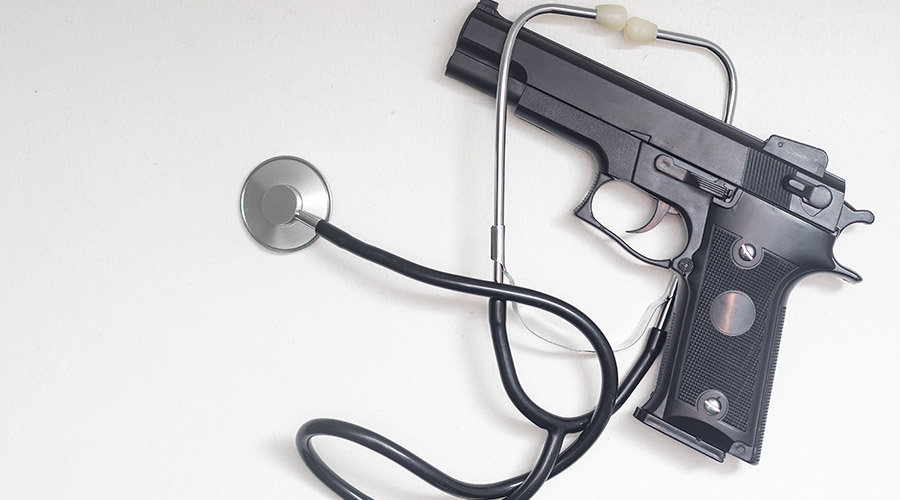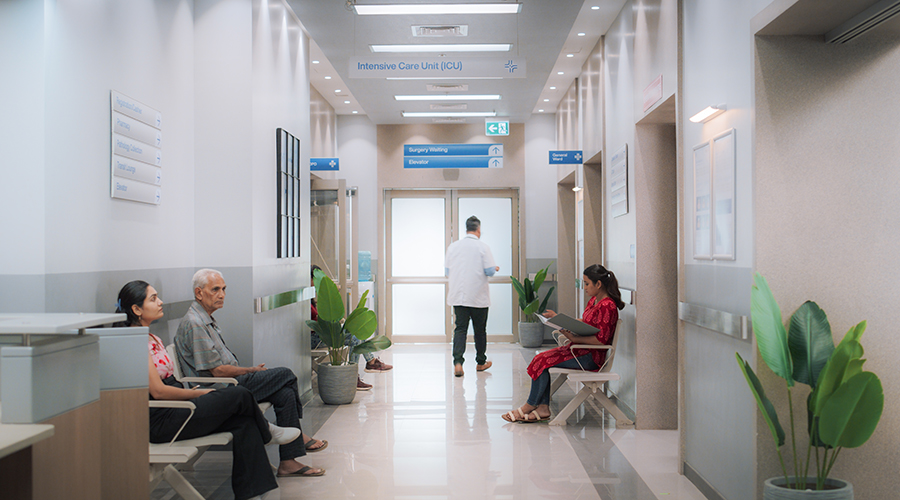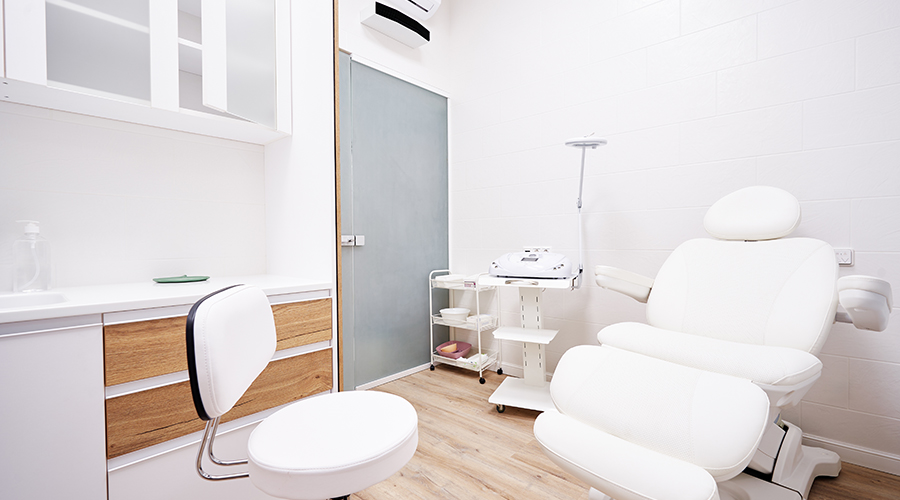Security, access control and occupant safety have become higher priorities in all types of institutional and commercial facilities. While high-profile active-shooter events in education facilities have pushed the issue into the national spotlight, a quieter but no less deadly crisis has emerged in healthcare facilities.
A host of pressures, including workplace violence, have emerged in recent years that are prompting healthcare facilities managers to revisit their facilities’ access control, assess their performance and decide whether the issue requires a system upgrade.
Pressure on facilities
Much has changed in healthcare facilities in recent years that has affected safety, security and access control considerations facing facilities managers.
“Healthcare facilities must comply with regulatory requirements that promote safety and access control measures, such as HIPAA — the Health Insurance Portability and Accountability Act — along with the Joint Commission and DNV’s security standards,” says Alison Flynn Gaffney, president of the healthcare division with JLL. “Healthcare facilities also handle tremendous amounts of sensitive data which makes them targets for cybercriminals. Facilities managers have recognized the need to integrate access and security controls and partner with their CIO’s and IT teams to have robust cybersecurity measures to safeguard patient and critical data.”
Jordan Miller, associate principal with Rider Levett Bucknall, identifies a series of issues affecting facilities’ security and access control:
Active-shooter incidents. Miller points to a study by the Stanford University School of Medicine that found that “hospital-based shootings are increasingly common. Over 150 hospital-based shootings were reported between 2009 and 2011 and resulted in 235 dead or injured. Despite this, hospitals across the country remain inadequately prepared.”
Physical security breaches. She points to unauthorized individuals gaining access to restricted areas that include patient rooms, operating rooms and medication storage areas.
“This can compromise patient safety and privacy,” Miller says
Violence against staff and patients. Healthcare workers are five times as likely to experience workplace violence as other workers, according to government data. The violence includes verbal abuse, physical abuse and threats that are made at healthcare workers. In a National Nurses United survey in 2022, 40 percent of hospital nurses said they have seen an increase in violent incidents.
Data breaches and cyberattacks. Miller says data breaches can lead to identity theft, fraud and reputational damage for healthcare organizations. The average cost of a healthcare breach in the United States is $10.93 million dollars, according to a report by Arctic Wolf. The healthcare sector saw over 500 such incidents in 2023.
Technological advances. There are newer and better security solutions available, including biometric authentication, smart card access and video surveillance.
Given the growing range and severity of threats to healthcare facilities, more managers are under pressure to ensure the performance of their facilities’ technology is up to the challenge.
Miller points out several potential problem areas related to access control performance. They include integrating access control systems with existing systems, including security cameras, alarms and electronic medical records; outdated hardware or software; cost; and limited resources to maintain or upgrade these systems.
Gaffney says managers can improve the chances of the upgrade’s success by also reviewing the operational impact.
“Outdated or inefficient access and security control systems can create operational inefficiencies,” she says. “Facilities managers are seeking investment in modernized systems that can offer improved operational efficiencies regarding visitor and access management, and surveillance. These investments and operational focus will provide enhanced safety and experiences for patients, caregivers, teams and communities.”
Upgrade challenges and solutions
Identifying and implementing advanced technology to address security in healthcare facilities is a complex but increasingly critical issue for managers,
“With the rise in security threats around the globe, healthcare facilities leaders are reevaluating their security systems to review and implement as required more robust measures that can protect against unauthorized access, violent acts, theft and other security incidents,” Gaffney says.
If managers make the decision to upgrade access control systems, Miller says they need to pay attention to potential hurdles in the process. They include disruption of operations, compatibility issues, staff training on new systems and procedures, regulatory compliance, security risks during the renovation and transition to new systems, and futureproofing to address long-term scalability and flexibility.
Gaffney says managers need to stay up to speed on advances in technology that can aid them in achieving their access control goals.
“Technology is advancing rapidly, and one must continue to evaluate and be forward thinking,” she says. “Capital dollars must be allocated for investment. Facilities managers along with partners in security and safety and information technology are embracing technologies such as video analytics, biometrics, smart card readers and, of course, AI-artificial intelligence to enhance security measures and provide accurate access control to benefit all.”
There are developments in the business of healthcare also affecting the decisions managers make.
“Healthcare as a field is also rapidly integrating across systems and geographies,” Gaffney says. “This can be a challenge for pace and scale needs. Integration with different platforms and systems should be top of mind for healthcare leaders inclusive of facilities management so that the maintaining of 24/7/365 care continues uninterrupted. Integration enables centralized monitoring, automation of processes, and elevated coordination and communication between different departments and sites overall."
Once the decision is made to upgrade an access control system, managers need to gather as much information as possible.
“Conducting a comprehensive security assessment is a must,” Gaffney says, adding that the process includes assessing existing security infrastructure and identifying gaps and vulnerabilities. “Physical security, cybersecurity, access control systems, emergency response plans and caregiver and team training should all be addressed through this process. A multi-layered approach to creating a comprehensive security strategy will help to minimize risks and provide a strong backbone of security measures both visible and unseen.”
Miller says managers should consider these tactics designed to minimize complications during the upgrade planning and performance:
- Develop a detailed implementation plan.
- Prioritize upgrades based on the highest risk areas and critical security needs, focusing on the highest potential impact on patient safety.
- Look for funding opportunities through grants and government incentives.
- Evaluate the long-term cost savings and return on investment when investing in the upgrades.
- Encourage feedback from staff members, and incorporate their input into training programs and system improvements.
- Develop a roadmap for ongoing maintenance, updates and enhancements to ensure that access control systems remain effective and up to date.
To ensure the success of the upgrade project and the performance of the upgraded access control system, Miller says managers need to address the full range of long-term requirements.
“Develop a comprehensive budget and resource plan that accounts for all costs associated with the project, including procurement, installation, training, maintenance and ongoing support,” she says.
The upgrade process and its aftermath will affect a range of interested parties throughout the organization, and Gaffney says managers can help ensure a successful project to including these parties in the process.
“Collaboration is the foundation for embracing new ways of working and delivering a safe environment for all to work in and receive care in,” she says. “Working with IT, security, emergency management, human resources, finance, compliance and other stakeholders within the organization and community is the best model to develop effective and implementable strategies.”
Dan Hounsell is senior editor for the facilities market. He has more than 30 years of experience writing about facilities maintenance, engineering and management.

 Social Media Driving Rise in Trade Jobs
Social Media Driving Rise in Trade Jobs North Carolina Children's Receives $25M Gift from Coca-Cola Consolidated
North Carolina Children's Receives $25M Gift from Coca-Cola Consolidated Swinerton Breaks Ground on $5.5M Medical Office Building in North Carolina
Swinerton Breaks Ground on $5.5M Medical Office Building in North Carolina Rethinking Strategies for Construction Success
Rethinking Strategies for Construction Success From Touchless to Total Performance: Healthcare Restroom Design Redefined
From Touchless to Total Performance: Healthcare Restroom Design Redefined